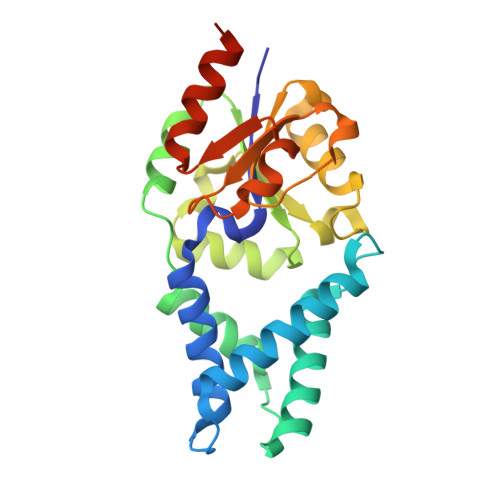Engineering an efficient and enantioselective enzyme for the Morita-Baylis-Hillman reaction.
Crawshaw, R., Crossley, A.E., Johannissen, L., Burke, A.J., Hay, S., Levy, C., Baker, D., Lovelock, S.L., Green, A.P.(2022) Nat Chem 14: 313-320
- PubMed: 34916595
- DOI: https://doi.org/10.1038/s41557-021-00833-9
- Primary Citation of Related Structures:
6Z1K, 6Z1L, 7O1D - PubMed Abstract:
The combination of computational design and directed evolution could offer a general strategy to create enzymes with new functions. So far, this approach has delivered enzymes for a handful of model reactions. Here we show that new catalytic mechanisms can be engineered into proteins to accelerate more challenging chemical transformations. Evolutionary optimization of a primitive design afforded an efficient and enantioselective enzyme (BH32.14) for the Morita-Baylis-Hillman (MBH) reaction. BH32.14 is suitable for preparative-scale transformations, accepts a broad range of aldehyde and enone coupling partners and is able to promote selective monofunctionalizations of dialdehydes. Crystallographic, biochemical and computational studies reveal that BH32.14 operates via a sophisticated catalytic mechanism comprising a His23 nucleophile paired with a judiciously positioned Arg124. This catalytic arginine shuttles between conformational states to stabilize multiple oxyanion intermediates and serves as a genetically encoded surrogate of privileged bidentate hydrogen-bonding catalysts (for example, thioureas). This study demonstrates that elaborate catalytic devices can be built from scratch to promote demanding multi-step processes not observed in nature.
- Manchester Institute of Biotechnology, School of Chemistry, University of Manchester, Manchester, UK.
Organizational Affiliation:


















